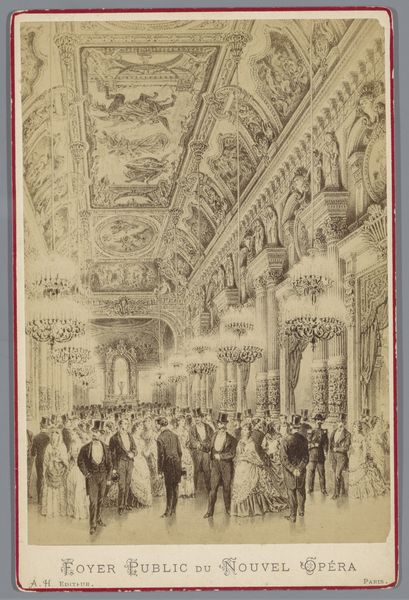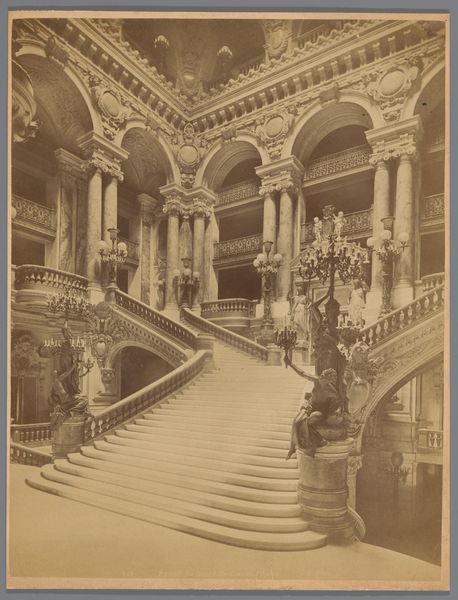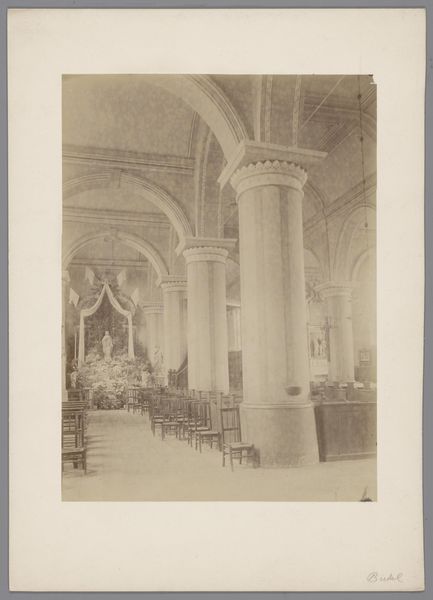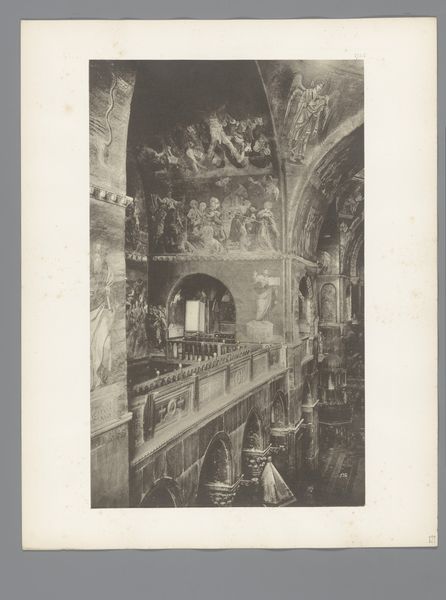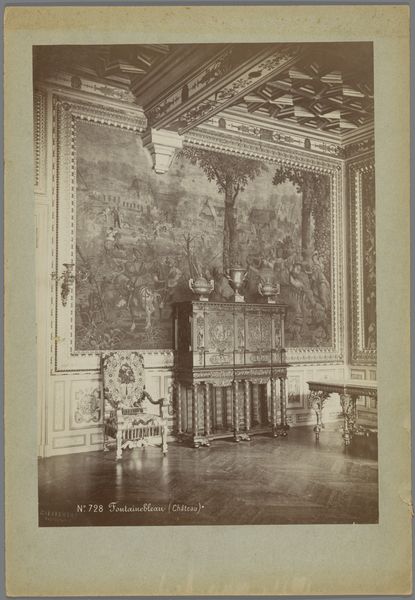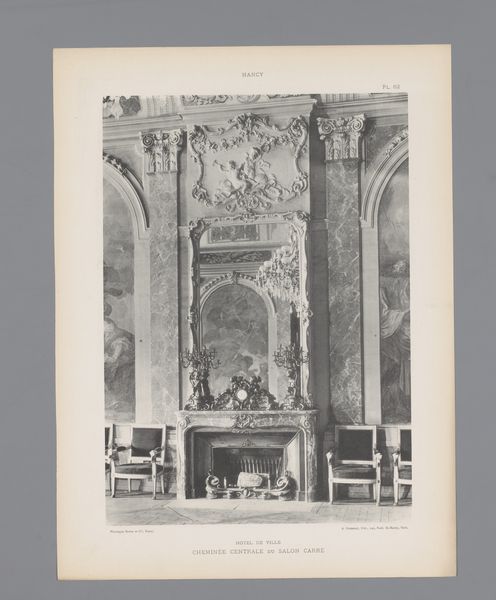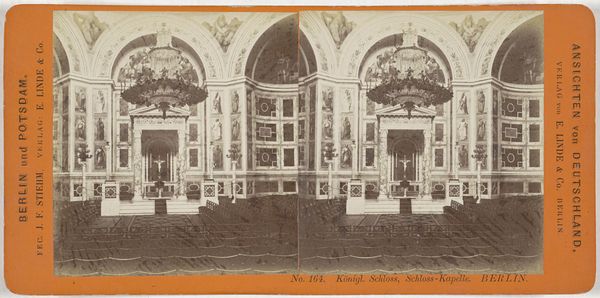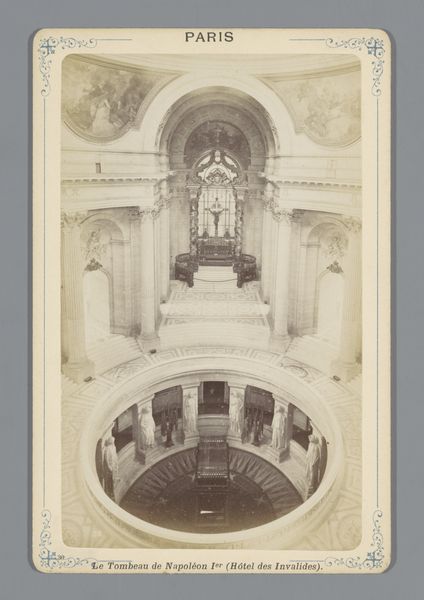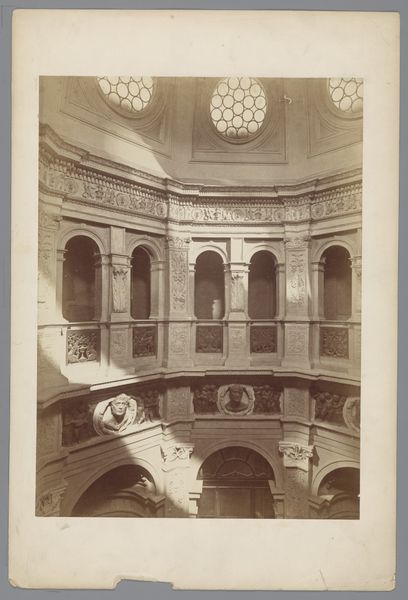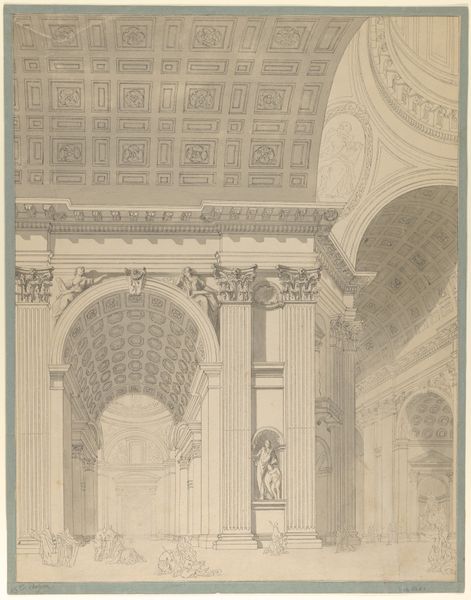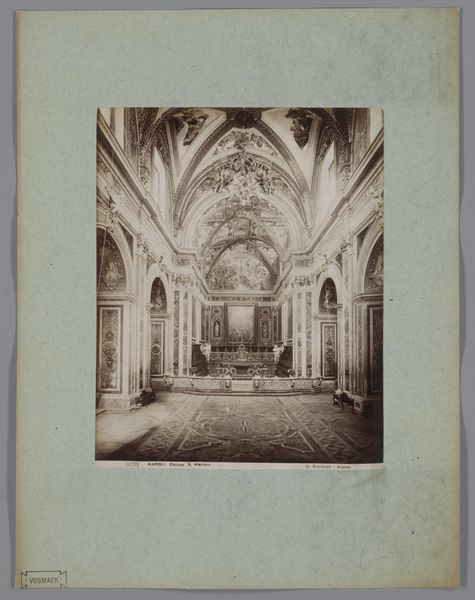
Fotoreproductie van een schilderij van de opening van de Opéra de Paris door Edouard Detaille 1870 - 1900
0:00
0:00
Dimensions: height 162 mm, width 108 mm
Copyright: Rijks Museum: Open Domain
Editor: So, this is a photograph titled "Fotoreproductie van een schilderij van de opening van de Opéra de Paris door Edouard Detaille," created sometime between 1870 and 1900 by Étienne Neurdein. It looks like a reproduction of a painting, showing the opening of the Paris Opera. I’m immediately struck by the sheer scale of the event captured, but the photograph itself is small, creating a really interesting contrast. What can you tell me about it? Curator: It’s fascinating to consider this image as a document of labour. Think about the manual reproduction involved. A painter like Detaille meticulously recreates a scene, and then Neurdein or someone else meticulously recreates that scene photographically using specific dark room and chemical processes. It is an engagement with making that demands precision, not just of eye, but of hand. This photo reproduction democratizes Detaille's original work in a way – a painting only the wealthy might have enjoyed. How accessible would the photograph have been by comparison, and what kind of labor was needed to distribute it? Editor: That's a great point about accessibility. It seems that reproductive technologies created a shift. Did the art world immediately see photographic reproduction as 'art,' or as merely a method? Curator: That's the critical tension, isn't it? Consider how the printmaking tradition, historically, mediated between art and commerce, between 'high' art and craft. Photography stepped into that complex system. And how might the social status of those *making* the photographs be considered: Who were the technicians, artists, distributors in the photographic supply chains and what were their class and cultural statuses? Editor: That’s a perspective I had not fully considered. I am interested now in learning about the studio assistants and all who might have made artmaking of this period possible! Curator: Precisely! Seeing the process, the material conditions, expands our understanding of the final image immensely.
Comments
No comments
Be the first to comment and join the conversation on the ultimate creative platform.

